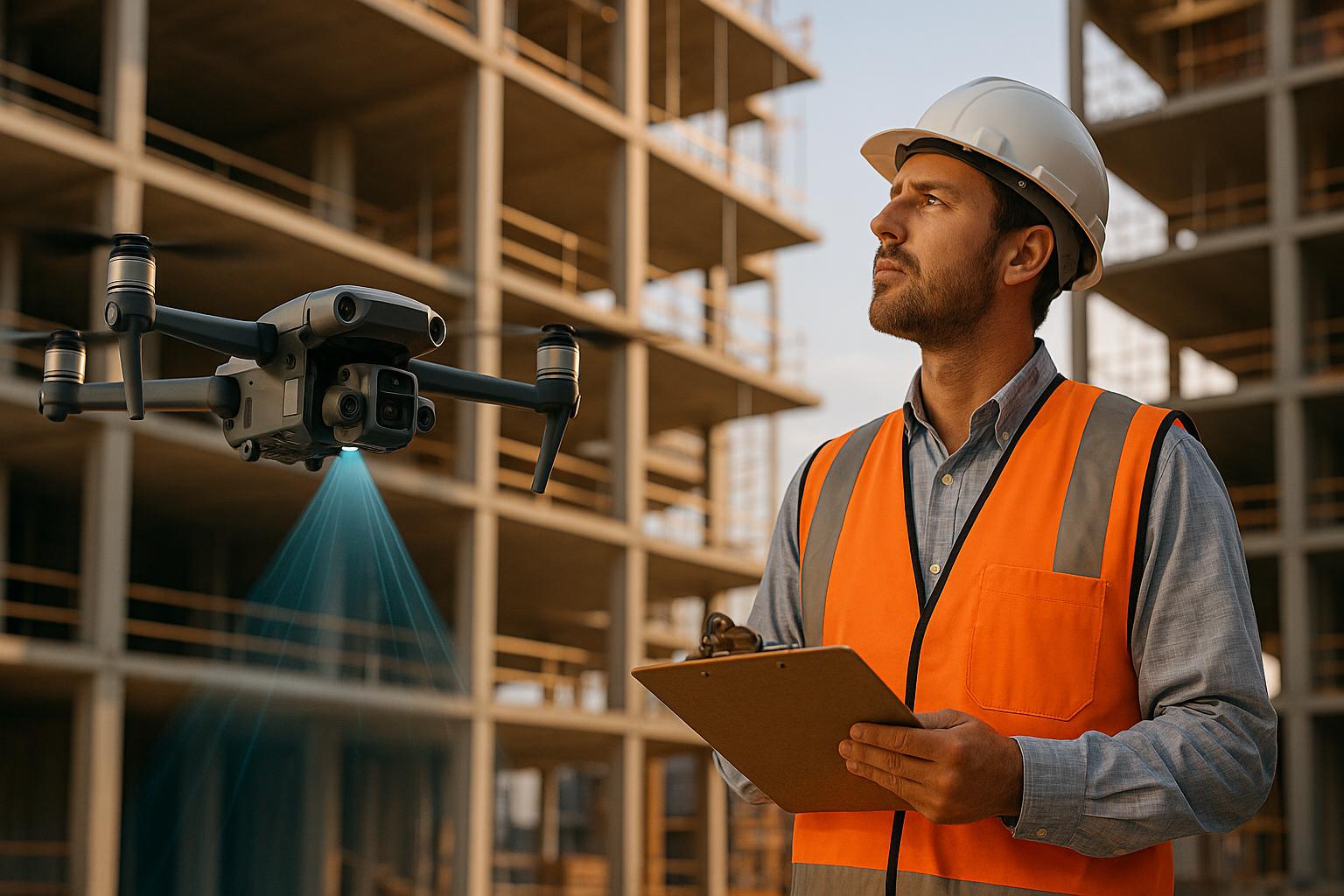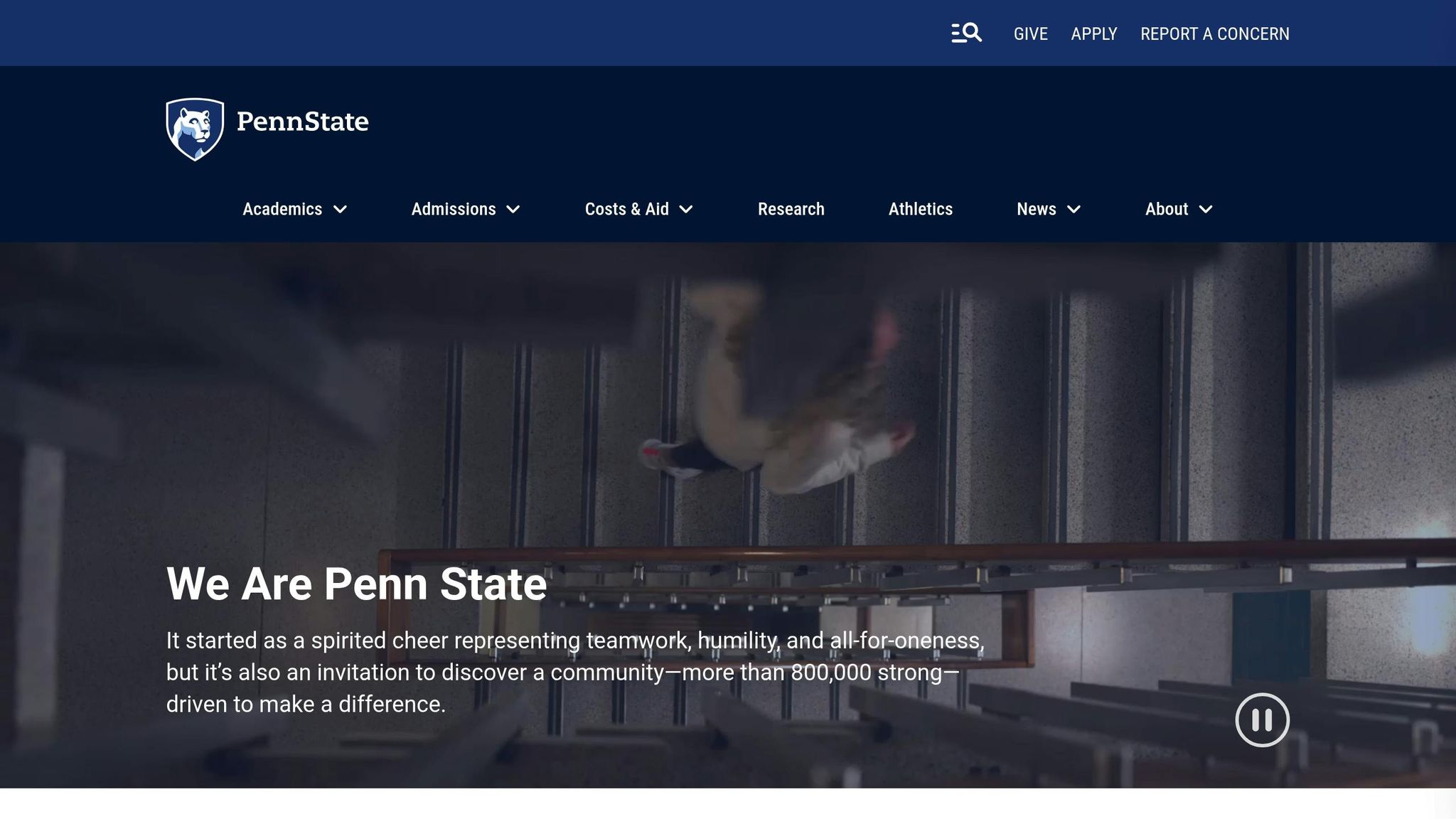Computer Vision vs Manual Site Photos: What Actually Catches More Defects on Real Projects
Taher Pardawala November 18, 2025
When it comes to defect detection, computer vision and manual site photos each have their strengths. Computer vision uses AI to analyze images quickly and consistently, excelling in large-scale, repetitive tasks. Meanwhile, manual inspections rely on human expertise, making them better suited for nuanced, complex, or smaller projects.
Key differences:
- Computer Vision: Faster analysis, high accuracy, scalable for large volumes, but requires high upfront costs and training data.
- Manual Inspections: Lower initial costs, flexible for unique situations, but slower, less consistent, and prone to fatigue-related errors.
Quick Comparison:
| Metric | Computer Vision | Manual Inspections |
|---|---|---|
| Accuracy | High, especially for clear patterns | 80–85%, drops with fatigue |
| Speed | Processes images instantly | Slow, dependent on human review |
| Cost | High upfront, lower over time | Low upfront, higher ongoing |
| Best For | Large-scale, repetitive tasks | Custom, smaller, or complex jobs |
For most projects, a hybrid approach – using computer vision for bulk tasks and manual inspections for detailed checks – offers the best balance of efficiency and thoroughness.
Case Study: PennState Computer Vision Defect Detection

How Computer Vision Detects Defects
Computer vision has revolutionized defect detection by using artificial intelligence to analyze images automatically. These systems can process a massive number of images, quickly identifying patterns and spotting anomalies that might otherwise go unnoticed. Let’s break down how this works, along with the benefits and some of the challenges.
Computer Vision Technology Basics
At its core, computer vision relies on machine learning techniques like convolutional neural networks (CNNs) to recognize defect patterns. These networks examine images at the pixel level, learning to identify specific features that indicate a problem.
Detection models, such as YOLO (You Only Look Once), are particularly effective at pinpointing and locating defects in real time. Whether it’s cracks, rust, or alignment issues, these models can spot them as images are processed.
The process typically unfolds in three steps:
- Image Capture: Cameras or drones collect images of the area or object under inspection.
- Preprocessing: Algorithms enhance the image quality and standardize formats, ensuring the data is ready for analysis.
- Analysis: The trained AI model evaluates the images, flags potential defects, and assigns confidence scores to its findings.
One of the standout features of computer vision is its ability to process images in real time. This means problems can be identified as soon as they appear, allowing teams to act quickly and prevent small issues from becoming major headaches.
Computer Vision Advantages
When trained effectively, computer vision systems achieve a level of accuracy that often surpasses human inspectors, especially when fatigue or error-prone tasks are involved. This reliability is crucial for projects that require reviewing thousands – or even millions – of images.
Another major strength is scalability. A human inspector has natural limits on how many images they can review in a given timeframe. Computer vision, on the other hand, can handle enormous workloads, making it ideal for large-scale operations, such as inspecting infrastructure or monitoring manufacturing lines.
These systems also improve over time. The more data they process, the better they become at identifying patterns specific to a particular task. For instance, a model trained for bridge inspections might excel at spotting structural wear, while one focused on manufacturing might specialize in detecting assembly flaws.
While the upfront investment in computer vision technology can be steep, the long-term savings are significant. Automated systems reduce the need for large inspection teams and help catch defects early, which can save money on repairs. Additionally, the objective nature of AI ensures consistent evaluations, removing the risk of human bias and improving overall project efficiency.
Computer Vision Drawbacks
Despite its many strengths, computer vision isn’t without its challenges. The initial setup costs can be high, requiring specialized hardware and powerful computing systems, which may put it out of reach for smaller projects.
Another hurdle is the need for large, labeled datasets to train the system effectively. These datasets must cover a wide range of potential defects, which can be resource-intensive to compile and manage.
While computer vision excels at spotting obvious issues like cracks or rust, it may struggle with more subtle problems that experienced human inspectors might catch by considering the broader context of a site.
Environmental factors also play a role. Poor lighting, bad weather, or unusual camera angles can interfere with the system’s ability to perform accurately, limiting its effectiveness in certain conditions.
Manual Site Photo Defect Detection Process
Manual site photo detection relies on inspectors to capture and analyze images directly from the site. Unlike automated methods, this approach is entirely dependent on human judgment. While this allows for unique insights, it also introduces variability. Let’s break down the workflow, advantages, and challenges of manual inspections.
Manual Detection Workflow
The process starts with inspectors capturing images of the site, focusing on areas that raise concerns. Using their trained visual skills and tools, they examine the site for defects. Once the photos are taken, inspectors review them carefully, relying on their expertise to spot issues that might not be immediately obvious [1].
Benefits of Manual Inspection
One of the standout advantages of manual inspection is its flexibility. Inspectors can adapt quickly to unexpected defect types without requiring extensive retraining [1]. Their ability to make judgment calls is especially valuable for identifying subtle or unusual defects that automated systems might overlook, particularly in complex or ambiguous scenarios [1].
Drawbacks of Manual Inspection
Despite its advantages, manual inspection has its share of challenges. Error rates can range from 10% to 20%, with inspectors missing roughly 15% of defects on average [1]. Factors like fatigue and long shifts can push the missed defect rate as high as 40% [1]. Additionally, manual methods often struggle to detect extremely small or subtle issues, such as defects less than 0.1 mm in size [1].
sbb-itb-51b9a02
Direct Comparison: Accuracy, Speed, and Cost
This section dives into the measurable differences in performance between manual inspections and computer vision systems, focusing on accuracy, speed, and cost-efficiency. Drawing on data from manufacturing facilities, these metrics provide a clear side-by-side evaluation.
When it comes to accuracy, computer vision systems leave manual methods behind. While human inspectors typically detect about 80–85% of defects [2], the gap becomes evident with examples like one customer of Instrumental, where 4.6% of units passed inspection by three human operators but were later flagged by an AI visual inspection system [3]. This highlights the enhanced quality control potential of automated solutions.
Speed is another area where computer vision excels. These systems can process images up to 100 times faster than humans, enabling near-instantaneous detection [2]. In contrast, manual inspections rely on human review, which is far slower and less scalable.
Cost is a critical factor for manufacturers. Although computer vision systems require a higher upfront investment, they often lead to substantial savings – ranging from $200,000 to $500,000 per production line annually [2]. Many manufacturers report achieving a return on investment within 12–18 months [2]. Manual inspections, while cheaper to start, come with higher ongoing operational costs and potential losses from undetected defects. Over time, the financial advantages of automation become undeniable.
Real-world examples emphasize these benefits. BMW Group achieved a 60% reduction in vehicle defects and saved $1 million annually, while Procter & Gamble saw a 40% reduction in labor costs and a 22% increase in Overall Equipment Effectiveness after implementing AI visual inspection across 12 lines in just 8 months [2]. Additionally, over 70% of manufacturers are planning to automate high-volume, repetitive visual inspections [2], showcasing the growing confidence in these systems.
Side-by-Side Comparison Table
Here’s a quick look at how the two approaches stack up:
| Metric | Computer Vision | Manual Inspections |
|---|---|---|
| Accuracy Rate | Higher detection rates than manual methods | 80–85% detection [2] |
| Processing Speed | Up to 100x faster; near-instant analysis [2] | Limited by human review |
| Scalability | Handles high-volume, simultaneous inspections | Limited by inspector availability |
| Initial Investment | High upfront cost for hardware and software | Lower initial cost |
| Annual Operating Cost | Lower operational expenses over time | Higher ongoing costs |
| Consistency | Delivers consistent, repeatable results | Prone to human variability |
| ROI Timeline | Typically within 12–18 months [2] | Ongoing operational expense |
While manual inspections may seem appealing due to lower entry costs, computer vision systems dominate in accuracy, speed, and long-term savings, making them a compelling choice for modern manufacturing.
When to Use Each Method
Choosing between computer vision and manual photos depends on the specifics of your project – its scale, complexity, and unique requirements. Each method has its strengths, and understanding where they excel can help you make the best decision for effective defect detection. Factors like accuracy, speed, and cost play a role in determining which approach aligns with your goals.
Best Cases for Computer Vision
Computer vision is a game-changer for high-volume, repetitive tasks where speed and consistency are non-negotiable. It’s particularly effective in large-scale projects like manufacturing, infrastructure monitoring, and construction, where uniformity and efficiency are key.
Manufacturing environments are an ideal setting for computer vision. With standardized products and predictable defect patterns, automated systems handle tasks like inspecting automotive parts, electronic assemblies, or prefabricated materials with precision and reliability. These systems thrive in environments where high throughput is essential.
For infrastructure monitoring, computer vision offers systematic and rapid coverage of large areas. Think bridge inspections, pipeline assessments, or facade evaluations for skyscrapers. The technology can process thousands of images in a fraction of the time it would take a human, spotting structural cracks, corrosion, or surface wear that might otherwise go unnoticed.
Computer vision also shines in time-sensitive or hazardous situations. Whether it’s extreme heat, confined spaces, or projects where delays could lead to costly setbacks or safety risks, automated systems provide fast, accurate results without endangering personnel.
Finally, quality control tasks that demand consistent standards across multiple shifts or locations are a perfect fit. Unlike human inspectors, who might face fatigue or subjective biases, computer vision systems maintain uniform detection criteria regardless of external conditions.
That said, there are times when human judgment and adaptability are irreplaceable, making manual inspections the better choice.
Best Cases for Manual Photos
For projects that require expert judgment and nuanced decision-making, manual photos are the way to go. These methods excel in capturing non-standard defects and providing the kind of contextual understanding that only human perception can offer.
Custom projects – like historic restorations, artistic installations, or unique prototypes – often require manual inspections. These jobs involve intricate details, such as evaluating finish quality, color matching, or craftsmanship, where human expertise outperforms automated systems.
Early project phases or pilot programs also benefit from manual methods. When teams are still defining defect detection protocols or understanding common issues, manual photography allows for flexibility and adaptability as the project evolves.
For smaller or budget-conscious projects, manual inspections are often the practical choice. If the scale or duration of the project doesn’t justify the cost of computer vision technology, manual methods can deliver effective results without the hefty investment. This makes them ideal for short-term assessments, small construction sites, or one-off inspections.
In regulatory compliance scenarios, manual inspections are often a necessity. When legal documentation, sworn statements, or professional certifications are required, human oversight ensures that the inspection meets all necessary standards.
Complex defect investigations also lean on manual approaches. When defects stem from multiple factors – such as environmental conditions, material issues, or installation errors – human inspectors can evaluate the broader context and piece together the root cause more effectively than an automated system.
Lastly, manual methods play a crucial role in training and development. By using manual inspections, teams can sharpen their defect recognition skills, build expertise, and better understand quality standards, which benefits future projects, even if automated systems are later introduced.
Conclusion: Choosing Your Detection Method
Deciding between computer vision and manual site photos isn’t about finding a one-size-fits-all solution – it’s about aligning the method with your project’s specific needs. Each approach has its strengths, and the key is to strike the right balance between accuracy, speed, and cost.
Computer vision is ideal for large-scale tasks that demand consistent and quick results. While the initial investment may be higher, the savings in labor and the faster turnaround can make it a cost-effective option for projects that span months or years. Its ability to handle high volumes efficiently often makes it the go-to choice for standardized, long-term work.
On the other hand, manual inspection shines in situations that require a more detailed and nuanced understanding. Experienced inspectors bring insight that automation might overlook, making this method particularly valuable for custom projects, regulatory compliance, or complex defect analysis. For smaller projects or those operating within budget constraints, manual methods deliver reliable results without the need for significant upfront investment in technology.
In many situations, a hybrid approach works best. For example, computer vision can handle the bulk of the work by quickly identifying potential issues, while manual inspection can step in for intricate cases or final quality checks. This combination leverages the speed of automation and the depth of human expertise, ensuring both efficiency and thoroughness.
When choosing your detection method, consider your project’s scale, timeline, and budget. Don’t forget to factor in your team’s skills – manual methods require experienced inspectors, while computer vision demands technical setup and ongoing maintenance. Large, standardized projects tend to benefit from automation, while smaller or more complex tasks may lean toward manual inspection.
Ultimately, the best strategy is the one that aligns with your project’s unique requirements. Whether you opt for automated precision, human expertise, or a mix of both, the goal is to safeguard quality and efficiency, ensuring the success of your project.
FAQs
How does combining computer vision and manual inspections improve defect detection on real-world projects?
A hybrid approach combines the strengths of both worlds: computer vision offers fast, automated analysis for consistent defect detection across large volumes, while manual inspections bring in the human expertise needed to address complex or subtle issues that technology might overlook.
This combination boosts accuracy, shortens inspection times, and helps manage costs effectively. With computer vision tackling repetitive tasks, human inspectors can concentrate on areas that demand specialized judgment, resulting in more dependable outcomes for practical, real-world applications.
What challenges come with using computer vision for defect detection, and how can they be addressed?
Implementing computer vision for defect detection isn’t without its hurdles. Key issues include ensuring high-quality and diverse datasets for training, dealing with variable lighting conditions that can throw off object recognition, and managing perspective shifts or occlusions where parts of objects are obscured. Plus, computer vision often struggles with interpreting context in more complex scenes.
To tackle these challenges, several strategies can help. Techniques like histogram equalization can adjust lighting inconsistencies, while advanced hardware such as depth cameras can enhance detection accuracy. Algorithms like Scale-Invariant Feature Transform (SIFT) are particularly useful for addressing changes in object size and orientation. For more nuanced scene understanding, integrating Natural Language Processing (NLP) methods can provide an extra layer of interpretation.
When might manual inspections be a better choice than using computer vision for defect detection?
Manual inspections shine in situations where human judgment is critical – particularly in handling complex or unstructured environments. These are the kinds of settings where subtle, unpredictable defects can arise, requiring a trained eye to interpret context-specific details or to differentiate between true issues and acceptable variations that automated systems might misclassify.
They’re also a practical choice for projects where access to the infrastructure or resources needed for computer vision technology is limited. In scenarios where quick, on-the-spot decisions are necessary, manual methods can step in without the need for advanced tools. While automation provides speed and consistency, there are plenty of cases where the nuanced expertise of a human inspector remains irreplaceable.
Related Blog Posts
- AI-Powered Quality Control: How Computer Vision is Revolutionizing Construction Inspections
- Automated Progress Tracking: How AI Cameras Are Replacing Manual Site Surveys
- AI Safety Compliance: How Smart Cameras Prevent 80% of Construction Accidents
- Computer Vision vs Human Inspectors: Construction Quality Control Showdown








Leave a Reply